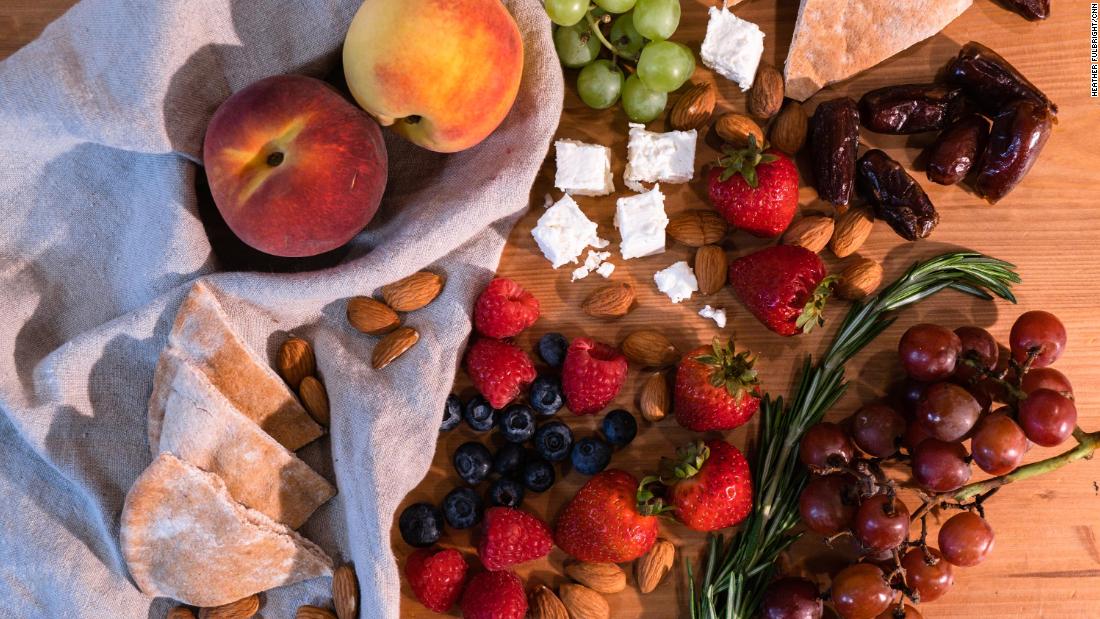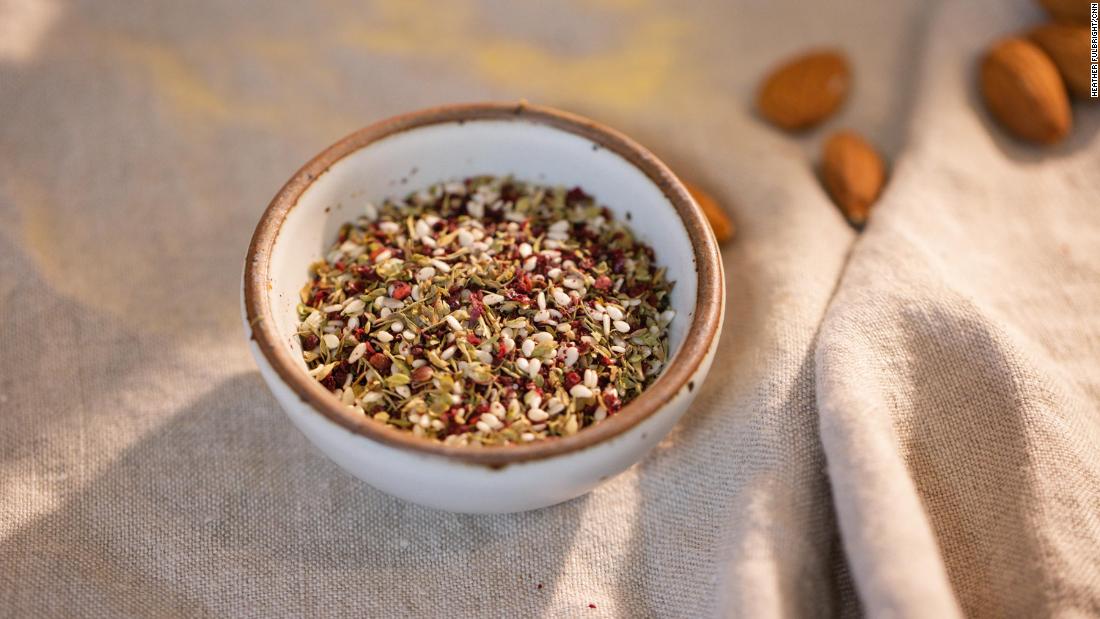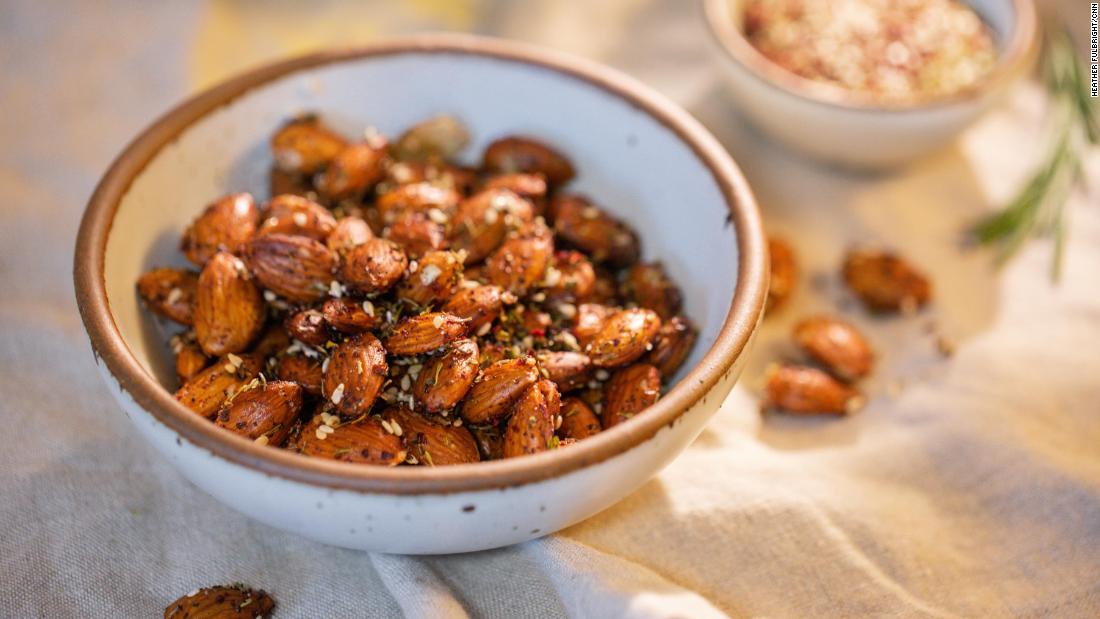MEDITERRANEAN STYLE
snack the healthy mediterranean way
We may be in love with our midmorning and afternoon munchies, but snacking isn't that common in most of the balmy Mediterranean. A breakfast full of whole grains, protein and fruit often has staying power, and a big, healthy Mediterranean lunch typically satisfies until dinner.
But if a fulfilling breakfast or lunch was missed, people who live in the Mediterranean cure their hunger with the same wholesome foods they eat at other times.
Nuts and seeds, typically used to garnish a dish, become a stand-alone snack that fills you up while providing a brain boost and heart-healthy fats. Rahaf Al Bochi, a registered dietitian nutritionist who specializes in Mediterranean food, created this roasted almond snack exclusively for CNN that features the Mediterranean spice blend za'atar.
A daily serving of nuts is about a ¼ cup or 3 tablespoons. Portion control is a good idea -- nuts are high in calories -- but as part of an overall healthy diet they are nutritional powerhouses!
Try adding ancient grains and seeds to your nuts as a snack, suggests Kelly Toups, director of nutrition for Oldways, a nonprofit focused on cultural cuisine.
Roast almonds and oats in olive oil and a generous handful of fresh rosemary, toast cashews and buckwheat with a sprinkle of dried ginger and paprika, or make a chewy granola out of oats, peanuts, sesame seeds and dried cherries and apricots.
Meze, which translated from Turkish means "snack," is a collection of small plates, or tapas, often served together in a massive spread for family get-togethers. Why not make a mini meze to take to work and enjoy?

Small containers or kid-size bento boxes could be filled with typical meze fare. Try grapes or strawberries, small cubes of hard cheese, and slices of whole-grain pita. On another day, pack chunky tomatoes and cucumbers with a small slab of feta and store-bought roasted veggie chips. Hummus could join sliced veggies and whole-grain pita.
Craving something sweet? Pack Greek yogurt, fresh or dried fruit, and a few nuts -- eating fiber or protein with a carb helps slow glucose absorption and keeps blood sugars in check.
Is hot and spicy your preference? Try tirokafteri, a classic Greek cheese spread made from whipped feta, olive oil, vinegar and some hot peppers. Or roast a can of chickpeas -- Mediterranean Dish blogger Suzy Karadsheh has some killer hints on how to make them super crispy -- then turn up the heat by adding cumin, chili powder and cayenne pepper.
And don't forget to hydrate. Being thirsty can hide as hunger, and a glass of cool, clear water may fill you up.
| cook, plate, post |
We invite you to make Al Bochi's original nut recipe, any other in this newsletter, or your favorite Mediterranean dish. Send us a photo and a review at eatbetter@cnn.com or share with #plateitpostit You might be featured in an upcoming story! Sahten!
| shop this way |
Let's go nuts! Add walnuts, pistachios or another nut to your shopping list this week. One study found a single serving of the giant, elongated Brazil nut lowered cholesterol in healthy volunteers.
add to cart
Our partners at CNN Underscored, a product reviews and recommendations guide owned by CNN, are into this Tarlini Bento Box set for your snacking needs.
spice rack
Throughout the Mediterranean, bread is often freshly baked and sprinkled with za'atar, a Middle Eastern mix of spices that is savory, tangy and woodsy all at once. Exquisitely versatile, za'atar also brightens up fresh tomatoes, roast chicken, sweet potato fries, hummus, baked eggs and more.

| food for thought |
The origin of the Mediterranean spice blend za'atar is murky. That's because traditional Middle Eastern women did not share -- even with their daughters -- their secret ingredients and blends. Al Bochi's blend, featured in her roasted almond recipe, combines thyme, oregano, sumac and sesame seeds.
| living the good life |
Make your own snack mix with olive oil and spices like paprika, garlic powder, cumin, even cayenne pepper, and several dried fruits, nuts, seeds or ancient grains you've never tasted. You can even try popping the grain in a very hot pan -- sorghum looks like mini popcorn!


